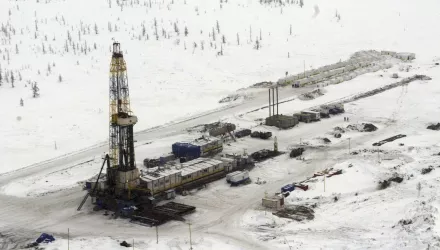Introduction
The Bering Strait, the narrow passage shared by the United States and Russia that connects the Pacific and Arctic Oceans, is a critical migration route for marine life, particularly for marine mammals and birds, and a valued cultural resource for Arctic Indigenous peoples on both sides of the strait. Today, growing shipping, industrial, and military activity, combined with rapid climate change, threatens Arctic ecosystems and the communities that depend on them.
As the Cold War ended, the Bering Strait Region (BSR) became, for a time, a region of active cooperation and exchange among Indigenous peoples of the United States (Alaska) and the Russian Federation (Chukotka), as well as among scientists and conservation groups working to conserve shared wildlife and ecosystems.
However, in response to Russia’s invasion of Ukraine in 2022, most countries in North America and Europe halted cooperation with Russia on science and conservation, jeopardizing thirty years of hard-won progress in environmental protection and climate research.
Due to the transboundary nature of environmental risks and climate impacts, this halt in cooperation limits both the United States and Russia’s ability to evaluate, understand, and respond to shared threats, ranging from toxic algal blooms to collisions, groundings, oil spills, and wildlife strikes from ship traffic. Information about these changes - acquired from both U.S. and Russian observers - is crucial for crafting appropriate responses to help human communities and nature adapt and build resilience. Past successful research collaborations between U.S. and Russian scientists on subjects such as permafrost, marine ecosystems, and wildlife highlight both the value of and potential for ongoing scientific dialogue despite political tensions.
Although U.S. foreign policy toward Russia appears to be shifting toward an approach that may favor renewed U.S.-Russian engagement, current areas of common interest do not include cooperation in science and conservation. Thus, the role of civil society in monitoring and protecting the unique natural and cultural aspects of the Bering Strait remains paramount.
This report presents key insights from a December 2024 workshop hosted at Harvard Kennedy School and provides recommendations for non-governmental stakeholders, such as scientists, universities, research institutions, and nonprofit organizations, to advance cooperation on climate research, conservation, and maritime safety in the BSR during a period of high geopolitical tension. While not comprehensive, it aims to reflect the core insights shared by workshop participants.










